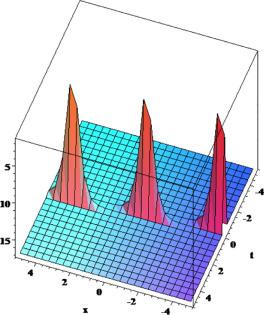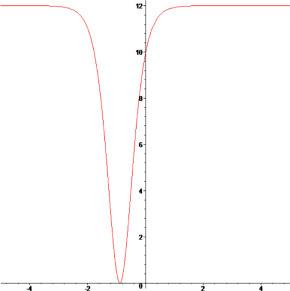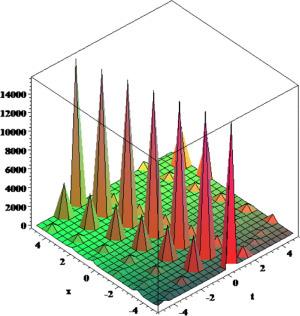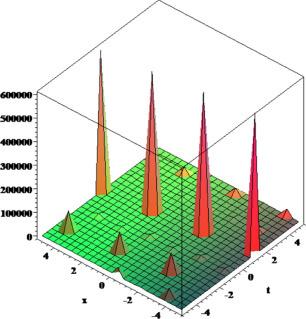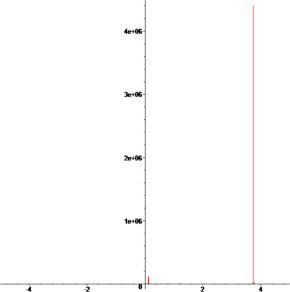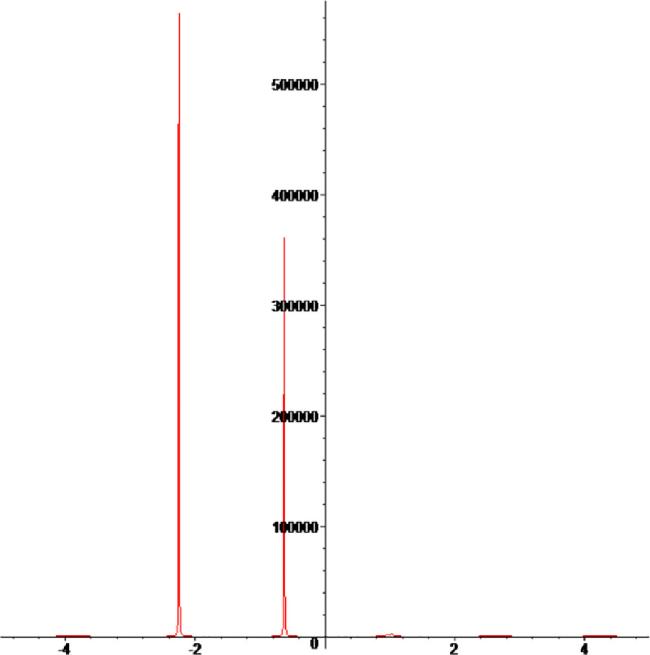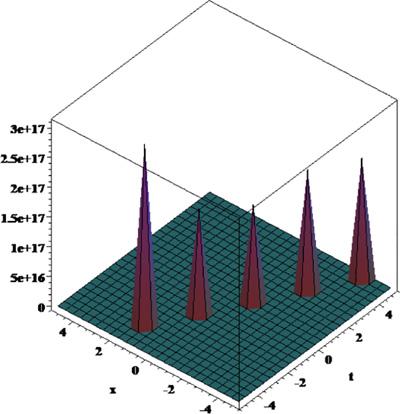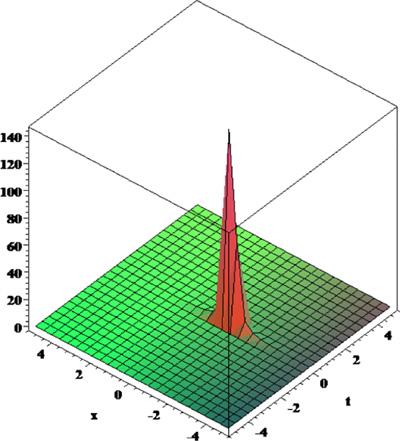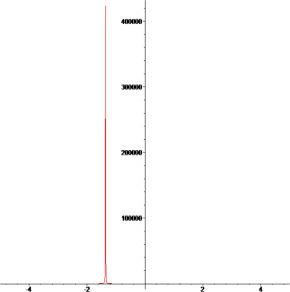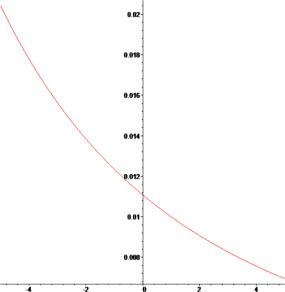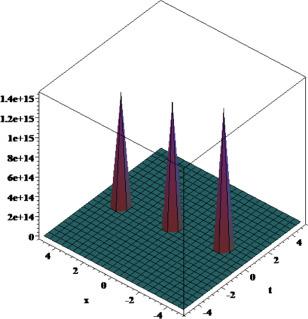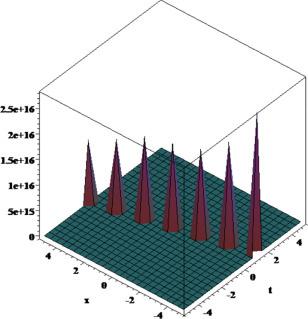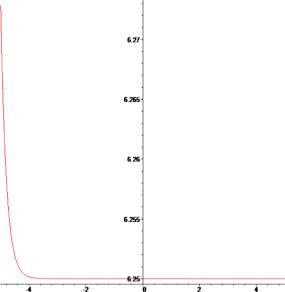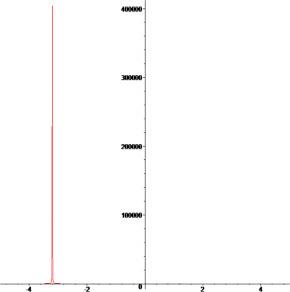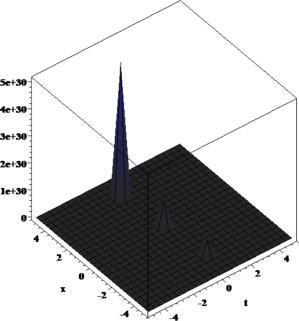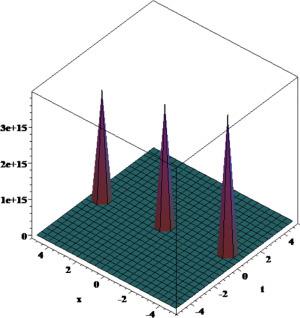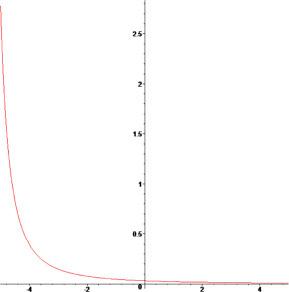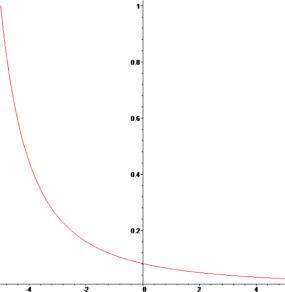In this paper, we find the new solutions of the Jacobi elliptic equation and the exact solutions of Eq. (2). In the present article, using the EAE method and the
-expansion method, we have obtained. With the help of Maple, the methods applied in this paper provide a powerful mathematical tool for finding accurate general solutions to a large number of NLPDEs or NLSEs in mathematical physics. To obtain Manakov model optical solitons, experimental equations and simple modified equations have been applied in
[61],
[62]. The methods applied in this paper provide additional new solutions in addition to the solutions obtained by the experimental equation and the modified simple equation methods, and also, in theory, to accurately select the parameters, some of our solutions coincides with the solutions available in
[61],
[62]. Moreover, we plotted 3D and 2D plots for some of our obtained solutions for more dynamical properties. We get three forms of solitary wave solutions and Figs. 1, 2, 3, 4, 5, 6, 7, 8, 9, 10, 11, 12, 13, 14, 15, 16, 17, 18, 19, 20 show that very obviously for these models. Fig. 5, Fig. 6, Fig. 13, Fig. 14 and 18 present multi-soliton solutions. Figs. 9 and 10 demonstrate rational function solutions. Fig. 17 shows single soliton solutions. As known, solitary waves and solitons are the specic types of localized solutions of several nonlinear physical models. By substituting the results within the original equation, we show that all solutions enrich the original equation. We wish this paper to contribute to future research and have different applications in the fields of modern optics and engineering.



